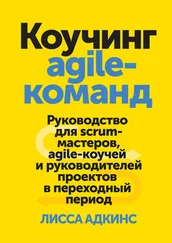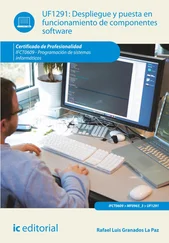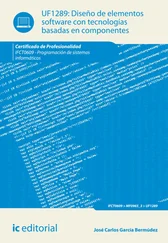To the extent that book is successful, it permits the Level 1 reader to get specific advice, the Level 2 reader to learn the boundaries of the rules, and the Level 3 reader to move with freedom.
One member in the Crystal family of methodologies is Crystal Clear. Crystal Clear can be described to a Level 3 listener in the following words:
"Put 4-6 people in a room with workstations and whiteboards and access to the users. Have them deliver running, tested software to the users every one or two months, and otherwise leave them alone."
I did, in fact, describe Crystal Clear in those words to a savvy project sponsor. He followed those instructions and reported five months later, "We did what you said, and it worked!"
I interviewed the team leader some months later and his report was about as short as my instructions: "Following your suggestion, the four of us took over this conference room, which has network connections. We kept it for all four months, drawing on the whiteboards over there, delivering software as we went. It worked great."
If you are an experienced software developer and can apply those instructions, then you have no need for an entire book called Crystal Clear. If either you or your sponsor is not at that stage, then you need the book-length version. This version describes key techniques in detail, exposes the principles involved, considers the zone of applicability for this minimalist methodology, and says how to move out of Crystal Clear when the project moves out of the zone of applicability.
One lesson to take away from all this is that if you are reading methodology texts at Level 1, don't become depressed that there are so many techniques and principles to master. Wishing the world were so simple as to only need a single software development technique is a wasted wish. Hire someone who is at Level 2 or 3.
If you read methodology texts at Level 2, note the alternative techniques and look for places to vary them.
If you are reading methodology texts at Level 3, recognize the continued need for methodology definition at Level 1. There will always be people entering the field who will need explicit direction at first, even if you don't.
Kent Beck, author of Extreme Programming Explained, described the use of Extreme Programming (XP) using similar levels. Asked about XP and the five levels of the Software Engineering Institute's
"Capability Maturity Model," he replied with XP's three levels of maturity:
1. Do everything as written.
2. After having done that, experiment with variations in the rules.
3. Eventually, don't care if you are doing XP or not.
The Three Levels and This Book
As described in the Preface, this book is aimed mostly at Level 2 and 3 readers. It has little to offer a Level 1 software practitioner looking for a simple procedure to follow. In fact, a key point of the book is that all methodologies have limitations, areas where they are more or less applicable. It is not possible to name one best and correct way to develop software. Ideally, the book helps you reach that understanding and leads you to constructive ideas about how to deal with this real-world situation. In that sense, the book is aimed at moving some Level 2 readers to Level 3.
Topics for the Level 2 readers include heuristics for selecting a project's base methodology and the ideas behind agile methodologies.
If you are a Level 3 reader, I hope you will find words to help express what you already know.
A few topics in this book are likely to be new even to experienced developers. Most people are Level 1 readers when it comes to the vocabulary for describing methodologies and just-in-time methodology tuning. These are therefore written in more detail.
Shu-Ha-Ri
The three levels of practice are known in other skill areas. In Aikido, they are called shu, ha, and ri (roughly translating as learn, detach, and transcend). To look up information about shu-ha-ri, you might start with a Web search or at www.aikidofaq.com/essays/tin/shuhari.html. The following extract is from that site's The Iaido Newsletter, Volume 7, Number 2, #54, Feb. 1995, "Shu Ha Ri" by Ron Fox, MWKF. (In this extract, the references in square brackets refer to references Ron Fox provides inside his article.) I find it fascinating how his portrayal so accurately predicts our mistaken, early attempt to teach design using CRC cards. "Shu, or Mamoru means to keep, protect, keep or maintain [1]. During the Shu phase, the student builds the technical foundation of the art. Shu also implies a loyalty or persistence in a single ryu or, in the modern interpretation, a single instructor [2]. In Shu, the student should be working to copy the techniques as taught without modification and without yet attempting to make any effort to understand the rationale of the techniques of the school/teacher [3]. In this way, a lasting technical foundation is built on which the deeper understanding of the art can be based. The point of Shu is that a sound technical foundation can be built most efficiently by following only a single route to that goal. Mixing in other schools, prior to an understanding of what you're really up to is an invitation to go down a wrong path. A path where the techniques developed will not have sound theoretical or practical value. In the traditional interpretation of the Shu stage, it is the instructor that decides when the student moves on from Shu to Ha, not the student. It's up to the student to follow the instructor's teaching as an empty vessel to be filled up [1].
Ha, is the second stage of the process. Ha means to detach and means that the student breaks free from the traditions of the ryu to some extent [2]. In the Ha stage, the student must reflect on the meaning and purpose of everything that s/he has learned and thus come to a deeper understanding of the art than pure repetitive
So, What Do I
The mystery is that we can't get perfect communication. The answer to the mystery is that we don't need perfect communication. We just need to get close enough, often enough.
To become more comfortable with the ideas in this chapter, think about what sort of person would be able to understand your system's design from the available design documentation.
Notice the following kinds of communication events:
People around you are blissfully unaware of missing each other's meaning in communication. Notice how often they manage to get by anyway. practice can allow. At this stage, since each technique is thoroughly learned and absorbed into the muscle memory, the student is prepared to reason about the background behind these techniques [3]. In academics, the Ha stage can be likened to the stage where enough basic information is available to the student that research papers of a survey nature could be expected. Ri means to go beyond or transcend. In this stage, the student is no longer a student in the normal sense, but a practitioner. The practitioner must think originally and develop from background knowledge original thoughts about the art and test them against the reality of his or her background knowledge and conclusions as well as the demands of everyday life. In the Ri stage, the art truly becomes the practitioner's own and to some extent his or her own creation. This stage is similar in academia to the Ph.D. or beyond stage.
[1] Kuroda, Ichitaro, "Shu-Ha-Ri" in Sempo Spring, pp. 9-10, 1994.
[2] McCarthy, Patrick, "The World within Karate & Kinjo Hiroshi" in Journal of Asian Martial Arts, V. 3 No. 2, 1994.
[3] Private conversations with Nakamura, L. Sensei Toronto. Spring, 1994."
With that basis in the three stages of listening and learning, we can continue resolving the mystery of how anything ever gets communicated at all, and what that portends for software development.
Do Tomorrow?
Someone gives you overly vague instructions, so that you can't catch the meaning. Someone gives you overly detailed instructions—so detailed that you can't listen. The people at your next meeting, speaking from different vocabularies, reach to touch into different experiences. People in a different field rely on very different shared experiences to convey information economically. Your waiter writes instructions for the cook in the back when you order a breakfast of "Two eggs over easy with hashbrowns, whole wheat toast, coffee." Ask to look at the order sheet. He probably wrote something like "#3 oe ww " (Menu item #3, over easy, whole wheat).
Читать дальше










